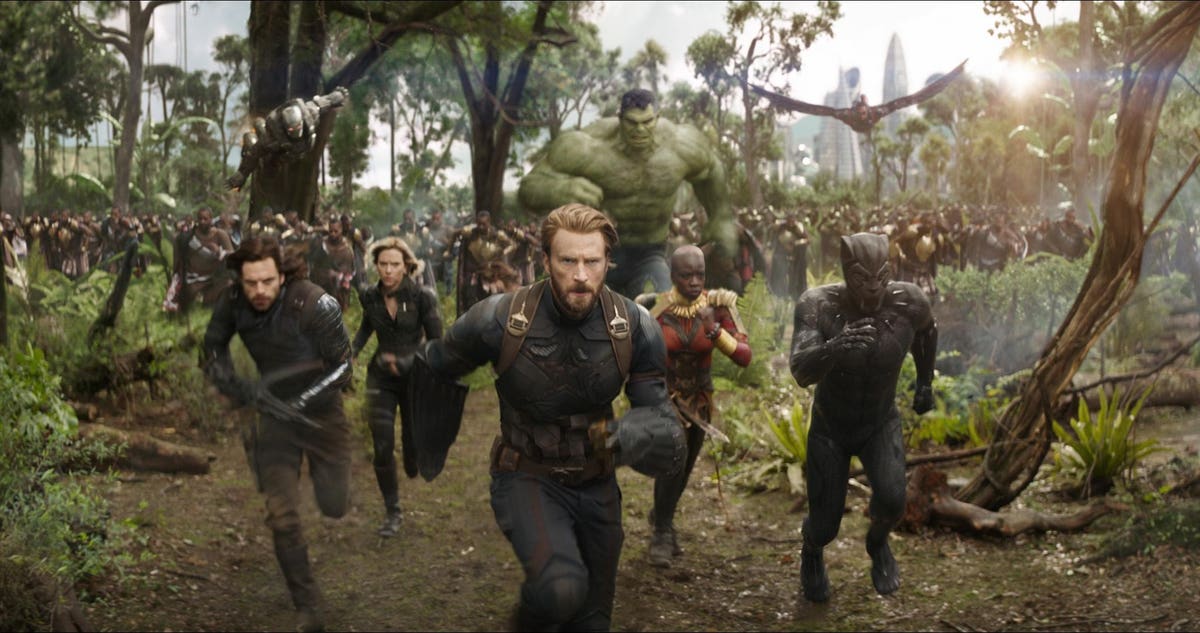New research has revealed that the two latest instalments in the Marvel Studios Avengers franchise made $1.4 billion of profits for Disney, which owns the rights to the superhero series.
To put the blockbuster haul in perspective, Avengers: Infinity War, and its 2019 sequel Avengers: Endgame, made more profit than Barbie has made in box office revenue. Indeed, the two Avengers adventures alone generated greater net profits for Disney than its cruise line has done over its entire 25-year history.
It explains why Disney is still persisting with future instalments in the superhero team up series despite recent Marvel movies getting lukewarm reviews and lower than expected takings at the box office.
As things stand, Avengers: The Kang Dynasty and its sequel Avengers: Secret Wars are due to be released in 2026 and 2027 respectively even though the main villain of the movies, Jonathan Majors, goes on trial this month on domestic abuse charges, which he denies.
Endgame was Marvel’s last movie to generate more than a billion Dollars at the box office with its $2.8 billion haul making it the highest-grossing film ever at the time.
Calculating the profit of the movies requires knowing how much they cost to make which is usually a closely-guarded secret. Studios tend to absorb the costs of individual pictures in their overall expenses and they aren’t itemised individually in their financial statements. The exceptions are ones shot in the United Kingdom which includes Infinity War and Endgame. There is good reason why they put up with a higher level of financial disclosure.
Movies made in the UK benefit from the government’s Film Tax Relief scheme which allows studios to claim a cash reimbursement of up to 25% of the money they spend in the country.
At least 10% of the core costs of the production need to relate to activities in the UK and in order to demonstrate this to the government, studios usually set up a separate Film Production Company there for each picture.
These FPCs have to file publicly-available financial statements showing everything from the headcount and salaries to the total cost of the production and the amount of cash reimbursement they receive.
The government’s regulations state that each FPC must be “responsible for pre-production, principal photography and post-production of the film; and for delivery of the completed film.” Accordingly, there is no doubt that their financial statements show all of the costs of each picture. It isn’t even possible for studios to hide costs in other companies as the law also states that there can only be one FPC for each film.
Crucially, although one film cannot have multiple FPCs, multiple films can have the same FPC which is precisely what happened with Infinity War and Endgame.
The FPCs usually have code names so that they don’t raise attention with fans when filing for permits to shoot off-site. The Disney subsidiary behind both Avengers movies was Assembled Productions III UK, which gets its name from the fact that Infinity War and Endgame were parts one and two respectively of the third Avengers movie.
They assembled one of the grandest ensemble casts in Hollywood history headlined by Robert Downey Jr, Gwyneth Paltrow, Scarlett Johansson, Chris Evans and Chris Hemsworth.
The two movies were filmed back-to-back at Trilith Studios, the former Pinewood Atlanta outpost. However, they were also shot on location in the UK with Durham Cathedral doubling for Asgard, home of many of Marvel’s gods. New Asgard in Norway was actually St Abbs in Scotland whilst its capital city of Edinburgh was also the scene of a battle between a group of alien aggressors and Evans’ Captain America character alongside the duo of Elizabeth Olsen and Paul Bettany.
A sign in the background of one of the scenes shows a Scottish flag and a reference to deep fried kebabs which are a local delicacy. It wasn’t an accidental detail.
To qualify for the cash reimbursement, movies must pass a points test based on factors such as how much filming was done in the UK, the level of UK content and how much they promote UK heritage which is why the sign showed a local dish.
Enough shooting was done on location in the UK to qualify for the funding which is why Disney set up the FPC there. The UK government’s terms require the FPC’s financial statements to show the production’s entire costs, not just those incurred in the UK. This reveals that Infinity War and Endgame cost a total of $1.3 billion (£1 billion) to make with no obvious division between them.
They received a $43.6 million (£34.4 million) cash reimbursement from the UK government bringing the net spending down to around $960 million. Together, they grossed $4.8 billion at the box office giving Disney a profit of $1.4 billion.
It is in stark contrast to the fortunes of the Disney+ streaming platform which has never made a profit. Its total losses come to $10.7 billion since it launched in November 2019 and the quality of individual pictures like Infinity War or Endgame has little effect on this. That’s because subscribers to Disney+ don’t pay per show as their subscription gives them access to almost all of Disney’s back catalogue.
What’s more, subscribers also get access to any new content released during their subscription period. Previously, customers had to pay theaters multiple times to see different movies released by the same studio but one streaming subscription is all it takes now.
It explains why Disney’s chief executive Bob Iger said earlier this year that the studio will shift towards releasing more new content theatrically rather than streaming it. Just a few more movies like Endgame and Infinity War could offset much of its losses from streaming so Disney really does have everything to play for.
Read the full article here





